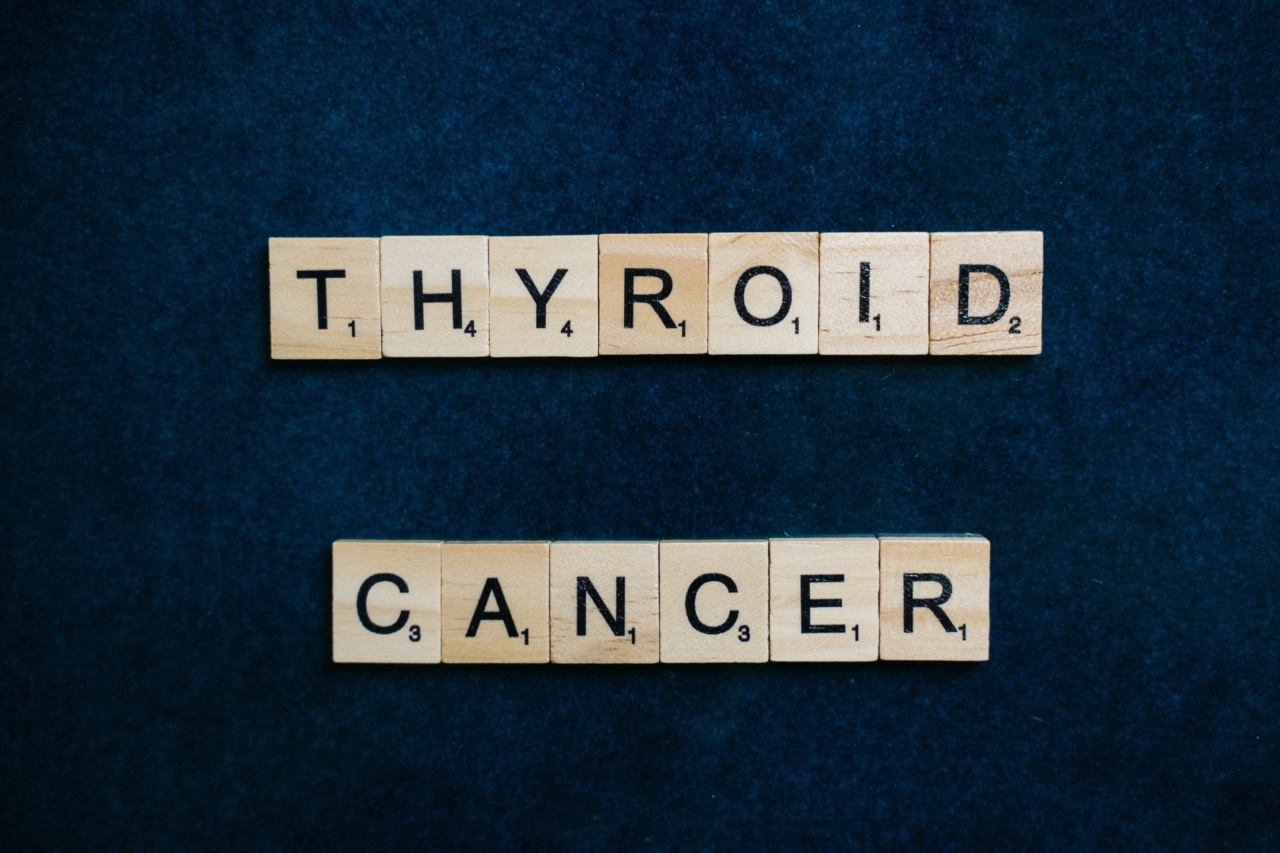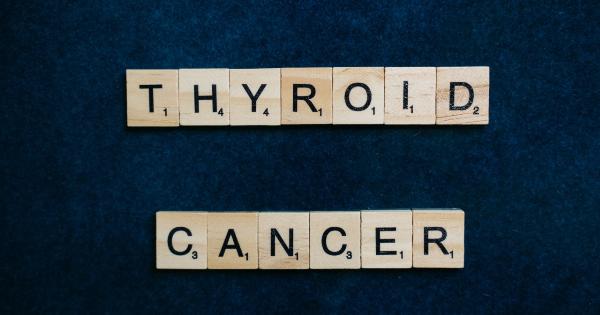Thyroid cancer is a type of cancer that affects the thyroid gland. The thyroid gland is located in the neck and is responsible for producing hormones that regulate metabolism. Thyroid cancer is rare but can be deadly if not detected and treated early.
The causes of thyroid cancer are not well understood, but exposure to certain chemicals is known to increase the risk of developing the disease. Identifying the chemicals that cause thyroid cancer is important in preventing the disease and protecting public health.
What is Thyroid Cancer?
Thyroid cancer is a type of cancer that affects the thyroid gland. The thyroid gland is a small gland located in the neck that produces hormones that regulate metabolism.
Thyroid cancer occurs when cells in the thyroid gland grow and divide uncontrollably, forming a tumor. The tumor can be benign (non-cancerous) or malignant (cancerous).
Thyroid cancer is a rare disease, accounting for only about 1% of all cancers. However, the incidence of thyroid cancer has been increasing in recent years, especially in women.
In 2021, it is estimated that there will be about 44,280 new cases of thyroid cancer in the United States, and about 2,200 people will die from the disease.
What Are the Risk Factors for Thyroid Cancer?
The exact causes of thyroid cancer are not well understood, but certain factors are known to increase the risk of developing the disease. These risk factors include:.
- Exposure to ionizing radiation: Exposure to high levels of ionizing radiation, such as that from nuclear fallout, can increase the risk of developing thyroid cancer.
- Family history of thyroid cancer: People with a family history of thyroid cancer are at higher risk of developing the disease.
- Age: Thyroid cancer is more common in people over the age of 40.
- Gender: Women are more likely than men to develop thyroid cancer.
- History of goiter or thyroid nodules: People who have had goiter (an enlarged thyroid gland) or thyroid nodules (lumps in the thyroid gland) are at higher risk of developing thyroid cancer.
- Exposure to certain chemicals: Exposure to certain chemicals, especially those used in agriculture and industry, has been linked to an increased risk of developing thyroid cancer.
What Are the Chemicals that Cause Thyroid Cancer?
Identifying the chemicals that cause thyroid cancer is important in preventing the disease and protecting public health. Some chemicals that have been linked to an increased risk of thyroid cancer include:.
- Polychlorinated biphenyls (PCBs): PCBs are a group of industrial chemicals that were widely used in electrical equipment, insulation, and other products until they were banned in the 1970s. PCBs have been linked to an increased risk of thyroid cancer.
- Perfluorinated compounds (PFCs): PFCs are a group of chemicals used in the production of non-stick coatings, water-repellent fabrics, and other products. PFCs have been found to accumulate in the thyroid gland and have been linked to an increased risk of thyroid cancer.
- Bisphenol A (BPA): BPA is a chemical used in the production of plastics and resins. BPA has been linked to an increased risk of thyroid cancer in animal studies.
- Dioxins: Dioxins are a group of chemicals that are produced by burning waste and industrial processes. Dioxins have been linked to an increased risk of thyroid cancer.
- Organophosphate pesticides: Organophosphate pesticides are a group of chemicals used in agriculture to kill insects. Organophosphate pesticides have been linked to an increased risk of thyroid cancer.
- Phthalates: Phthalates are a group of chemicals used in the production of plastics and other products. Phthalates have been linked to an increased risk of thyroid cancer in animal studies.
- Polycyclic aromatic hydrocarbons (PAHs): PAHs are a group of chemicals that are produced by burning fossil fuels. PAHs have been linked to an increased risk of thyroid cancer.
- Flame retardants: Flame retardants are a group of chemicals used in the production of electronics, furniture, and other products to slow the spread of fires. Flame retardants have been linked to an increased risk of thyroid cancer.
- Asbestos: Asbestos is a group of naturally occurring minerals that were widely used in construction until they were banned in the 1970s. Asbestos has been linked to an increased risk of thyroid cancer.
How Can Exposure to These Chemicals Be Reduced?
Reducing exposure to the chemicals that cause thyroid cancer is important in preventing the disease and protecting public health. Some ways to reduce exposure to these chemicals include:.
- Avoiding exposure to PCBs: PCBs are no longer produced in the United States, but they can still be found in some older electrical equipment and other products. Avoiding contact with these products, especially when they are old or damaged, can help reduce exposure to PCBs.
- Avoiding exposure to PFCs: Using non-stick cookware sparingly and avoiding the use of products that contain PFCs, such as waterproof clothing, can help reduce exposure to these chemicals.
- Reducing exposure to BPA: Using BPA-free plastics and avoiding canned foods that contain BPA can help reduce exposure to this chemical.
- Avoiding exposure to dioxins: Reducing the consumption of animal fats and choosing foods that are lower in fat can help reduce exposure to dioxins.
- Avoiding exposure to organophosphate pesticides: Eating organic foods and washing produce thoroughly can help reduce exposure to these chemicals.
- Reducing exposure to phthalates: Avoiding products that contain phthalates, such as certain types of plastics, can help reduce exposure to this chemical.
- Reducing exposure to PAHs: Reducing exposure to cigarette smoke and choosing cleaner forms of transportation, such as walking or biking, can help reduce exposure to PAHs.
- Avoiding exposure to flame retardants: Choosing products that are free of flame retardants can help reduce exposure to these chemicals.
- Avoiding exposure to asbestos: Hiring a professional to remove asbestos from homes and workplaces can help reduce exposure to this chemical.
Conclusion
Thyroid cancer is a rare but serious disease that can be caused by exposure to certain chemicals. Identifying these chemicals is important in preventing the disease and protecting public health.
Some chemicals that have been linked to an increased risk of thyroid cancer include PCBs, PFCs, BPA, dioxins, organophosphate pesticides, phthalates, PAHs, flame retardants, and asbestos. Reducing exposure to these chemicals can help prevent the disease and protect public health.





























